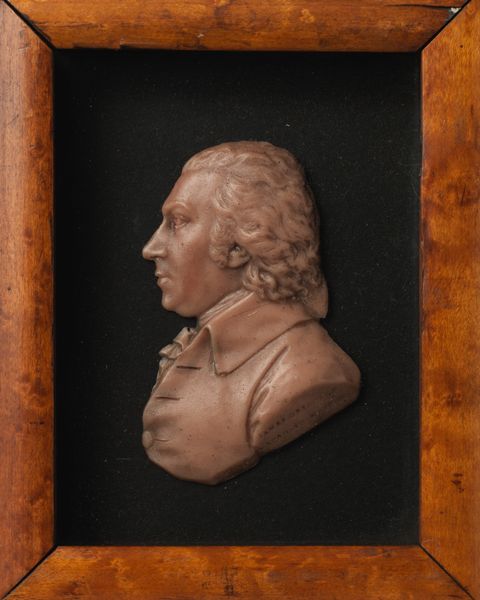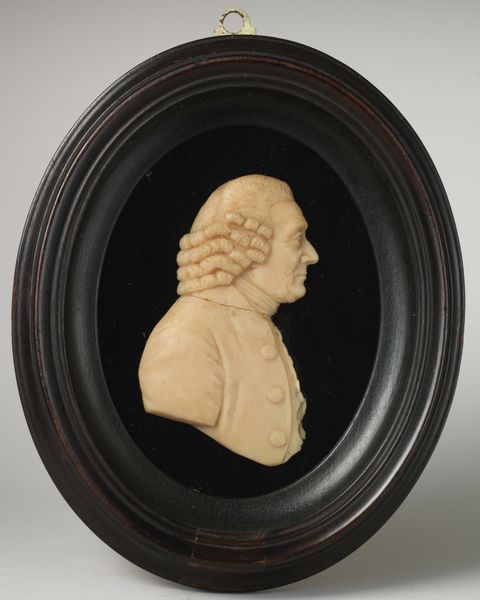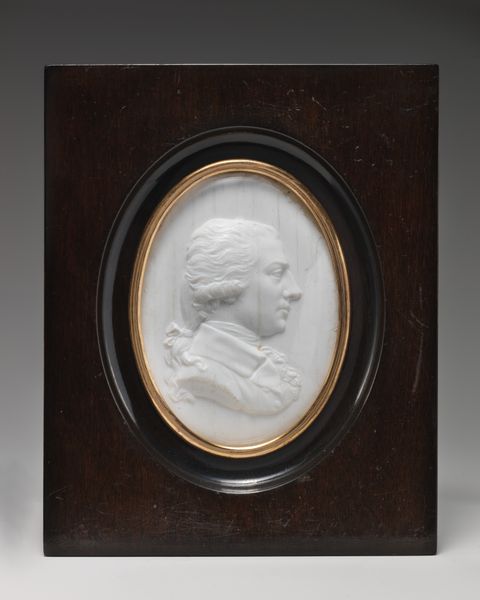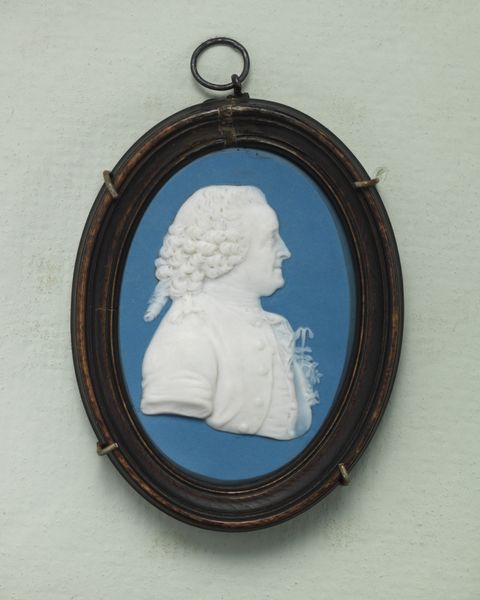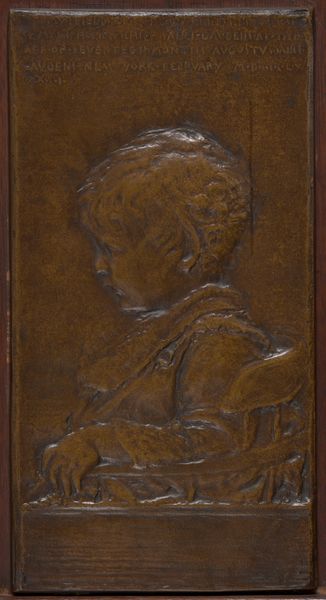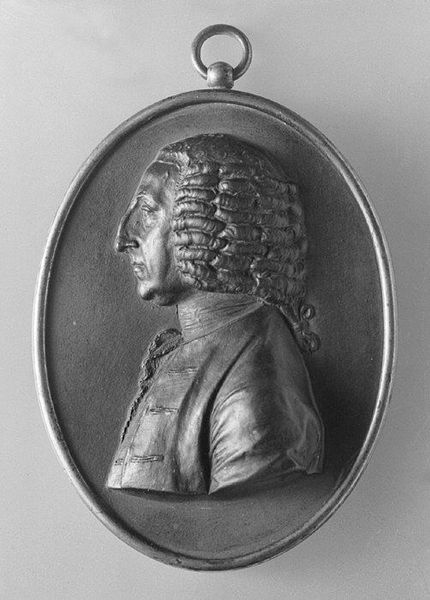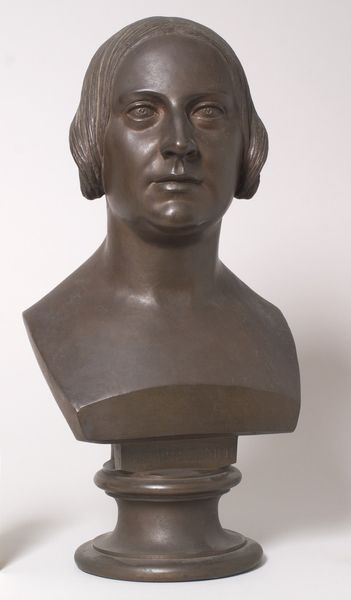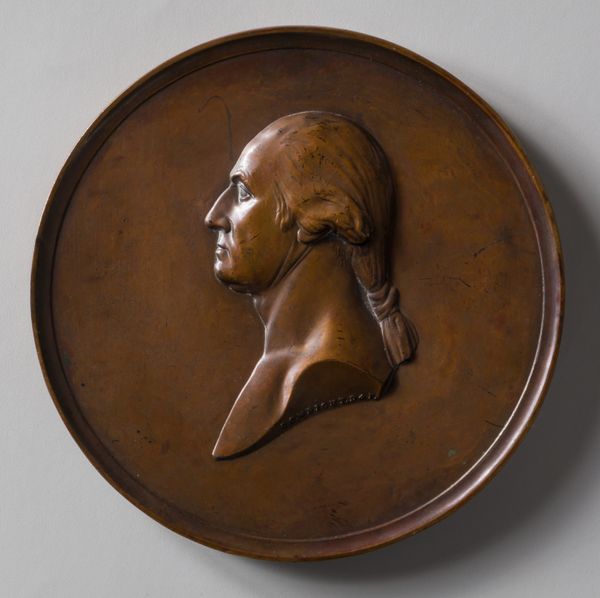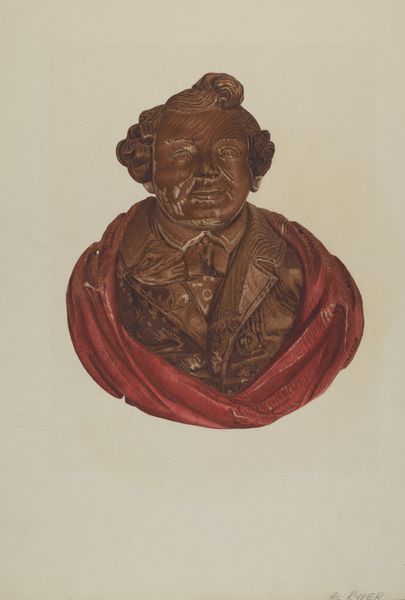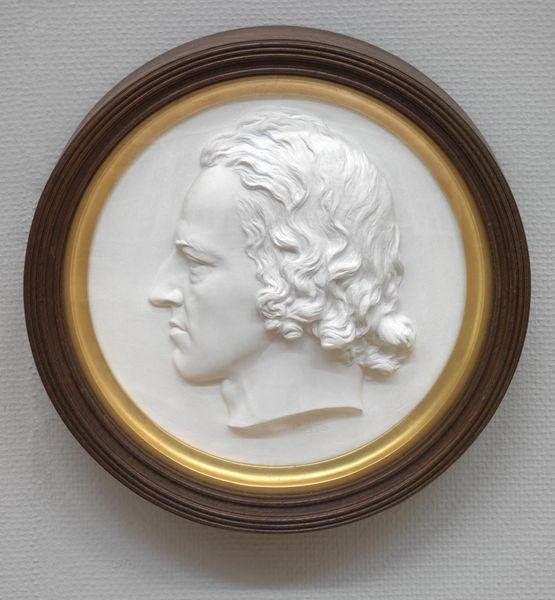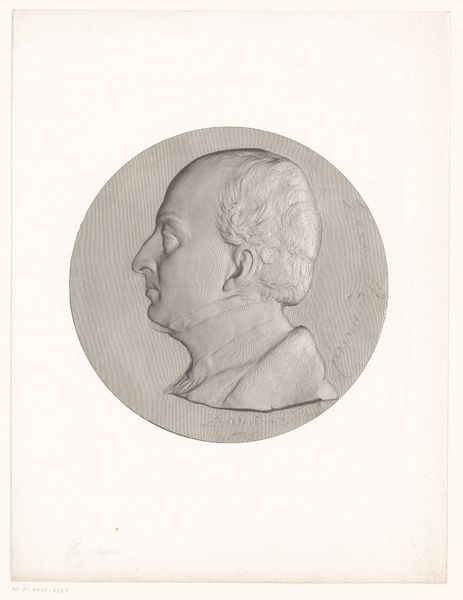
sculpture, plaster
#
portrait
#
neoclacissism
#
sculpture
#
sculpture
#
plaster
#
decorative-art
#
profile
Dimensions: 7 3/8 × 6 1/8 in. (18.7 × 15.6 cm)
Copyright: Public Domain
This portrait of Hugh Blair was created by James Tassie, who worked in the late 1700s, from an unusual material – glass paste. Tassie was a master of this medium, which allowed him to create incredibly detailed and durable cameos and medallions. Notice how the material itself, a kind of dense, colored glass, gives the portrait a smooth, almost porcelain-like quality. This was achieved by grinding glass into a fine powder, mixing it with a binder, and then carefully molding and firing it. The process required both artistic skill and a deep understanding of chemistry. Tassie developed special recipes to achieve the perfect color and consistency. What’s fascinating is that this wasn't just an artistic pursuit, but an entrepreneurial one too. Tassie produced thousands of these portraits, catering to a growing market for affordable and fashionable art. So, when you look at this portrait, consider not just the likeness of Hugh Blair, but also the innovative use of materials, the skilled labor, and the broader context of a burgeoning art market in the 18th century. It blurs the lines between craft, art, and industry.
Comments
No comments
Be the first to comment and join the conversation on the ultimate creative platform.
